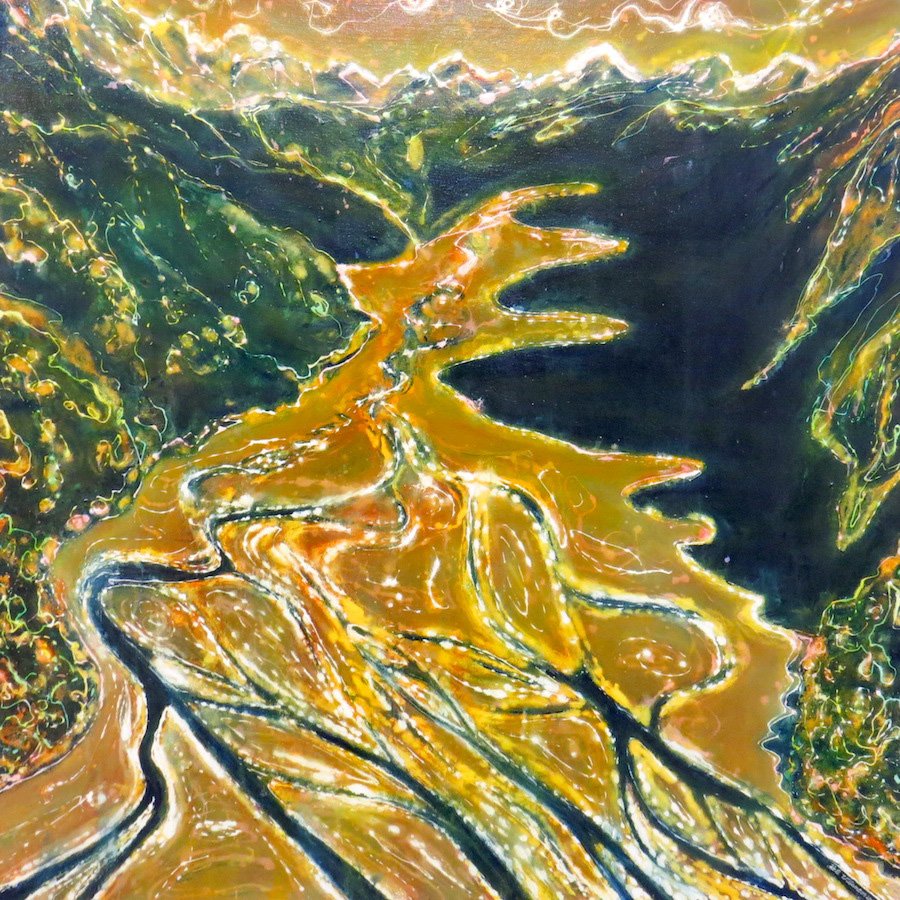In this week's Art Seen, James Dignan looks at exhibitions from Andrea Bell, Kate Williamson, and Kawita Vatanajyankur.
 Art Room, Dunedin School of Art, by James Kilgour
''The Order of Things'', curated by Andrea Bell (Hocken Collections Gallery)
Art Room, Dunedin School of Art, by James Kilgour
''The Order of Things'', curated by Andrea Bell (Hocken Collections Gallery)

One of the many things that separates humans from other species is the seeming obsession with classification and categorisation, a process which makes understanding the environment more accessible yet simultaneously restricts our vision of it to a narrow set of pigeonholes. Such is the focus of the Hocken's ''The Order of Things'', curated by Andrea Bell.
Through a series of artworks and archival materials, we are guided through a meditative, thought-provoking look at the classification process, with particular reference to the history of cataloguing in colonial and post-colonial New Zealand.
The individual items on display are arrayed cleverly to produce surprising juxtapositions and dialogues; old wooden library signs, for example, are placed next to a found poem created from similar prompts by Ruth Buchanan, and dry manila folders of field notes on Maori prehistory lie directly across the gallery from the much more emotive card chains listing the names of Kai Tahu hapu collected by Walter Mantell in 1848.
The latter reminds us that knowledge, like whakapapa, is passed from generation to generation. The display is bookended by two video displays, past and future. The first reflects oral tradition with the narration of a Maori poem, the second examines digital archiving in the age of cloud storage and data harvesting.
 Origin, by Kate Williamson
''Origin: A Visual Journey to the Source'', Kate Williamson (Moray Gallery)
Origin, by Kate Williamson
''Origin: A Visual Journey to the Source'', Kate Williamson (Moray Gallery)

Kate Williamson's latest exhibition, ''Origin: A Visual Journey to the Source'', takes as its inspiration the analogy of painting to the flow of water. As the artist describes it, ''Paint [...] is a living entity, flowing, fluid, fleeting, and fragile.''
In a small series of half a dozen works, all but one of them in acrylic, the artist explores this analogy by creating landscape forms which strip away the reality of the scene to replace it with something that gives the impression of moving liquid. This is particularly evident in the earth-fire-and-water composition Pool of colours, where the solidity of the landforms seem to melt into a flow of hue and light. A similar suffusion of solid elements is found in the sun-drenched Orb.
More tangible lands emerge in the high country valley of Origin and mountain meadow of Light Scatter II, but it is perhaps in the deep molten undergrowth and solid branches of Forest Lights that the exhibition reaches a peak.
The last work on display is the charming soft-focus Swallows Preening, with the titular birds sitting above a mist-shrouded landscape. Unlike the rich colours of the other works, this piece has a zen-like quality which would not be out of place in a traditional Japanese print.
 Untangled (video still), by Kawita Vatanajyankur
''Performing Textiles'', Kawita Vatanajyankur (Dunedin Public Art Gallery)
Untangled (video still), by Kawita Vatanajyankur
''Performing Textiles'', Kawita Vatanajyankur (Dunedin Public Art Gallery)

In ''Performing Textiles'', Thai artist Kawita Vatanajyankur explores repetitive manual labour and, in particular, the traditional roles assigned to women in Thai society, through a series of colourful, eye-opening videos.
In the four pieces, the artist uses her own body as a tool, becoming part of the hand-driven machinery of the textile industry. She becomes alternately mop, loom shuttle, bobbin, and wool winder, with twists of red cord spooling round her body, or with her white-wigged head being unceremoniously and repeatedly dunked into pails of red dye.
The videos contain little other than the motion of the artist/artisan as a cog in the process, presented in stark skin tones against luridly bright backdrops. They do not need to present more; the message is not in the presentation of the process - which we watch as vicarious/voyeuristic spectators - but in our feeling of being somehow complicit in a process which is at the least tortuous and possibly torturous. The red dye and strand become the worker's blood, their energy, their life-force.
By this simple method, the viewer is forced to consider the situation for manual labourers in traditional occupations, especially in developing countries. At the same time, it makes us consider the limits a body can endure in performing quotidian activities.












